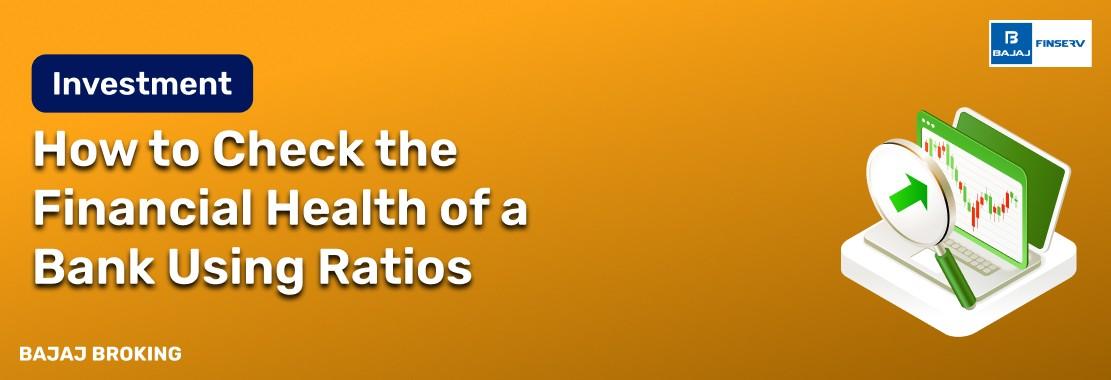Understanding the financial health of a bank can help interpret how effectively it manages risk, maintains capital, and supports lending operations. One of the primary methods used to assess this is through the analysis of financial ratios. These ratios offer insights into profitability, asset quality, capital adequacy, and operational efficiency.
In this article, we will explore key financial ratios, including GNPA and NNPA, PCR, CAR, CASA ratio, Net Interest Margin, and Price-to-Book ratio. Each of these serves as a parameter that helps in evaluating how robust a bank's financial position is across different dimensions.
Non-Performing Assets (GNPA & NNPA)
Non-Performing Assets (NPAs) are loans that are not generating income. They indicate how much of a bank's loan book has turned unproductive.
Gross NPA (GNPA): Represents the total value of loans classified as non-performing, as a percentage of the total loans issued by the bank.
Net NPA (NNPA): GNPA minus provisions made by the bank, shown as a percentage of net advances.
A lower GNPA and NNPA percentage usually reflects better loan management and reduced credit risk. These ratios are updated quarterly and are publicly available in bank disclosures.
Read Also: Popular Banks In India 2025
Provisioning Coverage Ratio (PCR)
Provisioning Coverage Ratio measures the extent to which a bank has made provisions for bad loans.
PCR Formula: (Total Provisions / Gross NPAs) x 100
A higher PCR indicates the bank is more prepared to absorb losses from NPAs.
It helps safeguard depositors' interests in case of defaults.
PCR above 70% is generally considered a healthy benchmark by some industry observers, though this is not a regulatory mandate.
This ratio helps assess how conservatively a bank has accounted for potential loan losses.
Capital Adequacy Ratio (CAR)
The Capital Adequacy Ratio (CAR) reflects a bank's ability to meet its obligations and absorb potential losses. It is a critical indicator under Basel norms.
CAR Formula: (Tier 1 + Tier 2 Capital) / Risk-Weighted Assets
The Reserve Bank of India requires Indian banks to maintain a CAR of at least 9%.
A higher CAR implies the bank has adequate capital to cover risk-weighted assets.
This ratio ensures that banks operate securely, minimising the risk of insolvency.
Current Account Savings Account (CASA) Ratio
CASA ratio indicates the proportion of a bank's deposits that are in current and savings accounts.
CASA Formula: (CASA Deposits / Total Deposits) x 100
A higher CASA ratio is typically beneficial, as these accounts have lower interest obligations.
It helps in reducing the bank’s cost of funds.
Banks with a higher CASA ratio generally have stronger liquidity positions.
Tracking this ratio helps analyse how efficiently a bank is sourcing low-cost deposits.
Net Interest Margin (NIM)
Net Interest Margin measures the difference between the income generated from lending and the interest paid on deposits.
NIM Formula: (Net Interest Income / Average Earning Assets) x 100
A higher NIM reflects better profitability from lending operations.
It indicates the efficiency of a bank in managing its core business of lending.
NIM varies based on asset mix, interest rates, and overall banking strategy.
This ratio provides a snapshot of the bank's income-generating ability relative to its assets.
Price to Book (P/B) Ratio
The price-to-book ratio compares a bank's market valuation to its book value.
P/B Formula: Market Price per Share / Book Value per Share
A lower P/B ratio may indicate undervaluation, whereas a higher ratio could reflect investor confidence.
Investors widely use it to assess whether a bank’s stock is reasonably priced.
This ratio is applicable when comparing banks with similar asset bases but varying market performances.
Conclusion
Analysing a bank's financial health using ratios allows for a more structured and comprehensive evaluation. Each ratio highlights a different area—whether it's asset quality, earnings, or capital sufficiency.
By consistently reviewing metrics such as GNPA, NNPA, PCR, CAR, CASA, NIM, and P/B ratio, stakeholders can gain clarity on how a bank operates and manages its financial responsibilities. While no single ratio offers a complete picture, collectively, they provide necessary signals about a bank’s overall health and performance.





